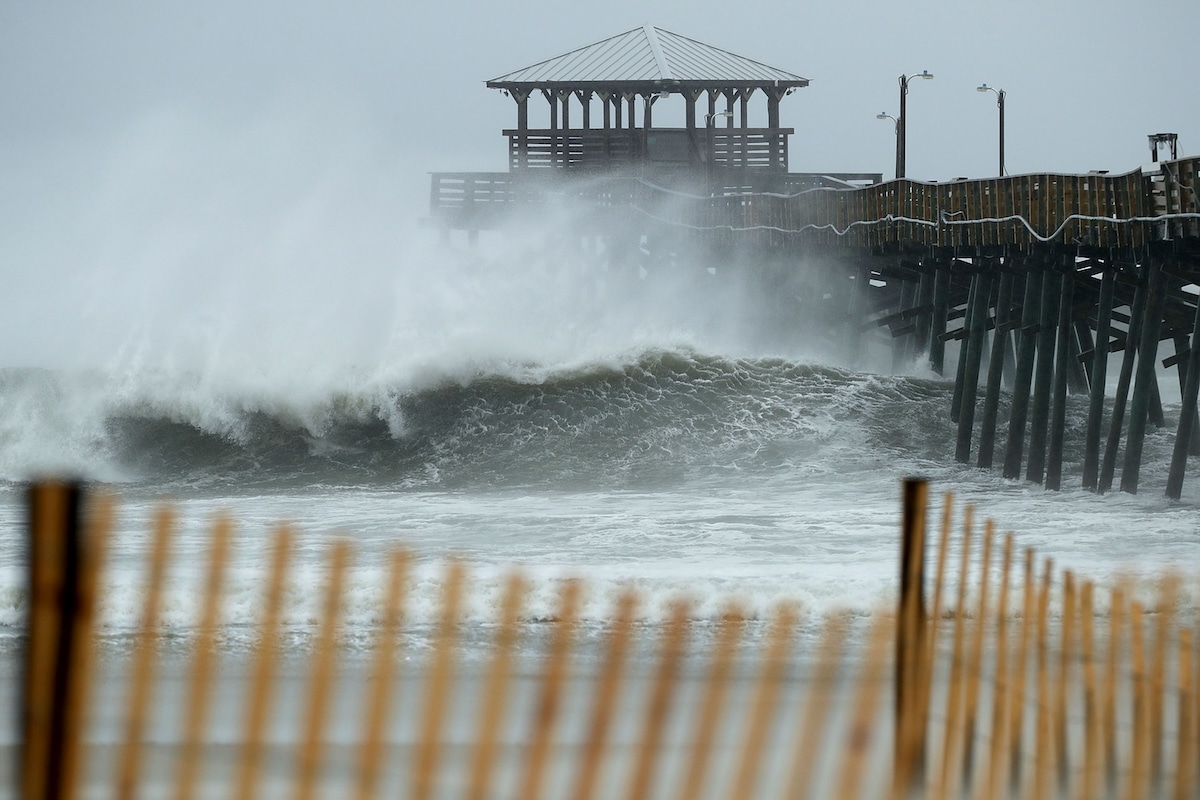Hurricane Waves in Americas Getting 20% Bigger Each Decade, Study Finds

 Why you can trust us
Why you can trust us
Founded in 2005 as an Ohio-based environmental newspaper, EcoWatch is a digital platform dedicated to publishing quality, science-based content on environmental issues, causes, and solutions.
Mexico, the United States and Caribbean countries are being pummeled by hurricane waves that have increased in size by 80 percent over the past four decades, according to a first-of-its-kind global trend study led by China’s Hohai University.
The researchers looked at long-term differences in the surface area and height of tropical cyclone waves on the ocean’s surface globally since 1979, a press release from the University of Reading said.
The research team discovered that the coverage area of North Atlantic Ocean waves generated by hurricanes grew by almost 20 percent — around 64,479 square miles, approximately the size of Florida — each decade.
“The rapid growth of tropical cyclone waves over recent decades is extremely worrying given their immense danger to communities, businesses and ecosystems. Our results show that the threat from their waves is escalating fast across the globe,” said co-author of the study Dr. Xiangbo Feng, a tropical storm expert with the University of Reading, in the press release.
Hurricane waves worldwide increased in area by six percent each decade from 1979 to 2022, while their maximum height went up by three percent.
“Hurricanes whip up huge, devastating waves over that quickly swamp coastlines. Their long, rolling swells also travel hundreds of miles, flooding distant areas, so coastal towns and vessels urgently need to prepare better defences — especially in the Americas — to avoid damage from these extreme waves,” Feng added.
As hurricanes move through the warm ocean waters of tropical regions, strong winds at the center of the storm stir up enormous waves. The biggest ocean wave height generated by a tropical cyclone — caused by the West Pacific’s Typhoon Krosa in 2007 — had a mean height of 78.74 feet. The figure is calculated by taking the average trough to crest measurements of the highest one-third of waves.
The study, “Global increase in tropical cyclone ocean surface waves,” was published in the journal Nature Communications.
The researchers also found that tropical cyclones’ total wave energy has gone up by nine percent worldwide each decade, the press release said. The biggest increase — 30 percent per decade — occurred in the North Atlantic and East Pacific.
“We find that in the past 40 years the Gulf of Mexico and the east coasts of [the] US are at particularly higher risk because of tropical cyclone waves,” Feng told Newsweek. “This is related to the fact that the North Atlantic storms are becoming stronger and having longer time of impact. In our study, Hawaii also [has] become more vulnerable to these huge waves.”
The scientists predict that ocean wave size will likely increase substantially due to tropical cyclone size, intensity and the speed at which it moves across the surface of the Earth.
“The North Atlantic storm activities are related to the Atlantic Multidecadal Oscillation (AMO). As the AMO is still in the positive phase and this state is likely to last, we anticipate that the risk of tropical-cyclone associated ocean waves will remain [at] a high level in the next few years,” Feng told Newsweek. “[T]here are uncertainties at the moment because we are not sure about how the El Niño state will evolve.”
The study’s authors said further research is necessary to understand how global warming affects wave height.
As these waves happen more frequently and become higher, the study highlights the need for coastal regions to be prepared, as high waves and damaging winds will affect larger areas when the storms make landfall.
Subscribe to get exclusive updates in our daily newsletter!
By signing up, you agree to the Terms of Use and Privacy Policy & to receive electronic communications from EcoWatch Media Group, which may include marketing promotions, advertisements and sponsored content.

 233k
233k  41k
41k  Subscribe
Subscribe 




